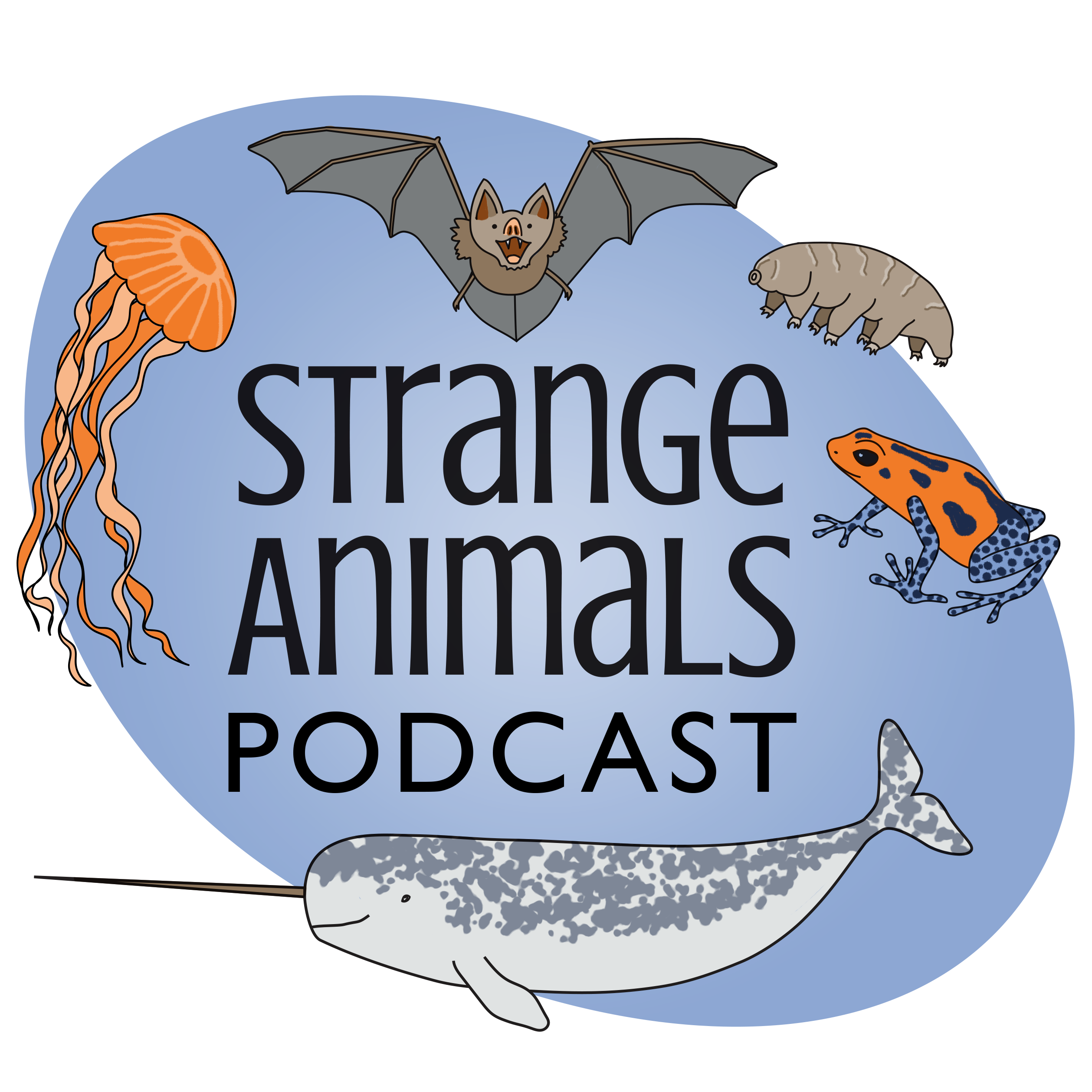Episode 238: The Pink Fairy Armadillo and Two Adorable Friends

Sign up for our mailing list! We also have t-shirts and mugs with our logo!\n\nThis week we've got three adorable little animals to learn about! Thanks to Simon and Thia, Elaine, and Henry for their suggestions!\n\nFurther reading:\n\nTurning the spotlight on the rusty-spotted cat (Wildlife SOS)\n\nThe cute and fuzzy pink fairy armadillo:\n\n \n\nThe cute and fuzzy rusty spotted cat:\n\n \n\nThe cute and fuzzy baby Arctic tern:\n\n\n\nAdult Arctic terns:\n\n \n\nShow transcript:\n\nWelcome to Strange Animals Podcast. I\u2019m your host, Kate Shaw.\n\nThis week we\u2019ve got three strange and adorable animals for you, all listener suggestions because I\u2019m getting really behind on those. Thanks this week to Simon and Thia, Elaine, and Henry!\n\nFirst, Simon and Thia suggested the pink fairy armadillo. That\u2019s one we covered briefly in a Patreon episode back in 2018, but it deserves to be featured in the main feed because it\u2019s so strange and cute. It lives in deserts and grasslands of central Argentina, South America, but since its range is so restricted and it spends most of its life underground and is rarely seen by humans, we don\u2019t know much about it.\n\nThe pink fairy armadillo is the smallest armadillo species known. It only grows about 4.5 inches long, or 11.5 cm, small enough to sit in the palm of your hand. It\u2019s protected by a leathery shell that runs from its nose along the top of its head and down its back to its bottom, and the shell is segmented like a regular armadillo\u2019s shell except that it\u2019s a delicate pink. The fluffy fur on the animal\u2019s sides and tummy is white. It has a short spade-shaped tail, but the rear of its body is flattened, and it uses its flat bottom to compress dirt in the tunnels as it digs. It has a small head, short legs, and gigantic front claws. Its hind claws are big too.\n\nIt spends almost all of its life underground, digging shallow tunnels and eating small animals like worms, insect larvae, snails, and insects like ants, which it probably hunts by scent. It has a good sense of smell but its eyes are tiny and its ears don\u2019t show at all, although it does have good hearing. It can dig extremely quickly. It loosens the soil with its huge front claws, kicks it back with its hind claws, and then does a quick reverse to tamp the new dirt heap into a firm column with its flat bottom. This keeps the floor of its burrow clear so the armadillo can breathe properly and helps keep the burrow from collapsing.\n\nAlmost the only time the pink fairy armadillo surfaces is when it reaches an obstacle it can\u2019t dig through or around, and then its claws are so big it has trouble walking on hard surfaces. This is bad if it tries to cross a road. Most sightings of pink fairy armadillos are of roadkill animals. Sometimes it surfaces after heavy rain when its burrows are flooded.\n\nThe reason the pink fairy armadillo\u2019s shell is pink is that blood vessels show through it. Researchers think it can regulate its temperature according to how much blood flows through the vessels beneath the shell. The shell is only attached to the body by a membrane along the spinal column and doesn\u2019t protect it as well as other armadillo shells do, but then it\u2019s almost always underground so the shell probably mostly protects it from rocks and roots.\n\nThe pink fairy armadillo doesn\u2019t do well in captivity, usually dying from stress within a day or two of capture, and since it\u2019s almost always underground it can be hard to find and study. It\u2019s threatened by habitat loss, climate change, poaching, and the use of pesticides. It\u2019s extremely sensitive to changes in temperature and soil.\n\nThe pink fairy armadillo has a similar-looking but slightly larger relative, the greater fairy armadillo, which can grow up to 7 inches long, or 17.5 cm. It\u2019s also a burrowing armadillo that lives in South America, which has an additional conservation problem. It\u2019s considered by locals to be the spirit of a dead baby, so if a local sees it they usually kill it.